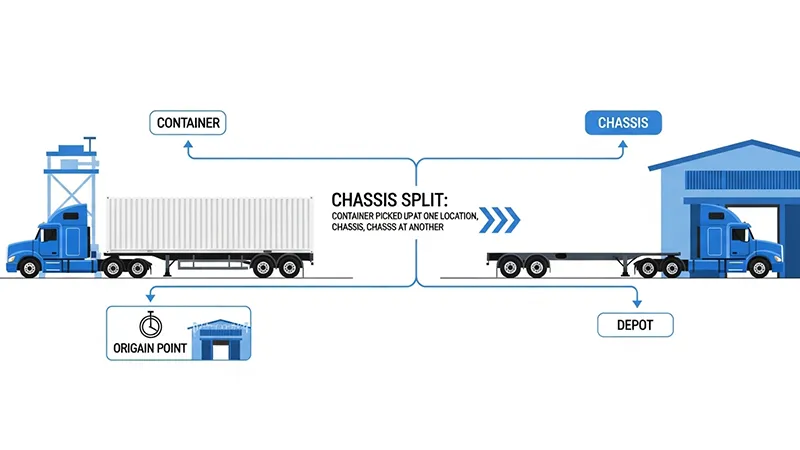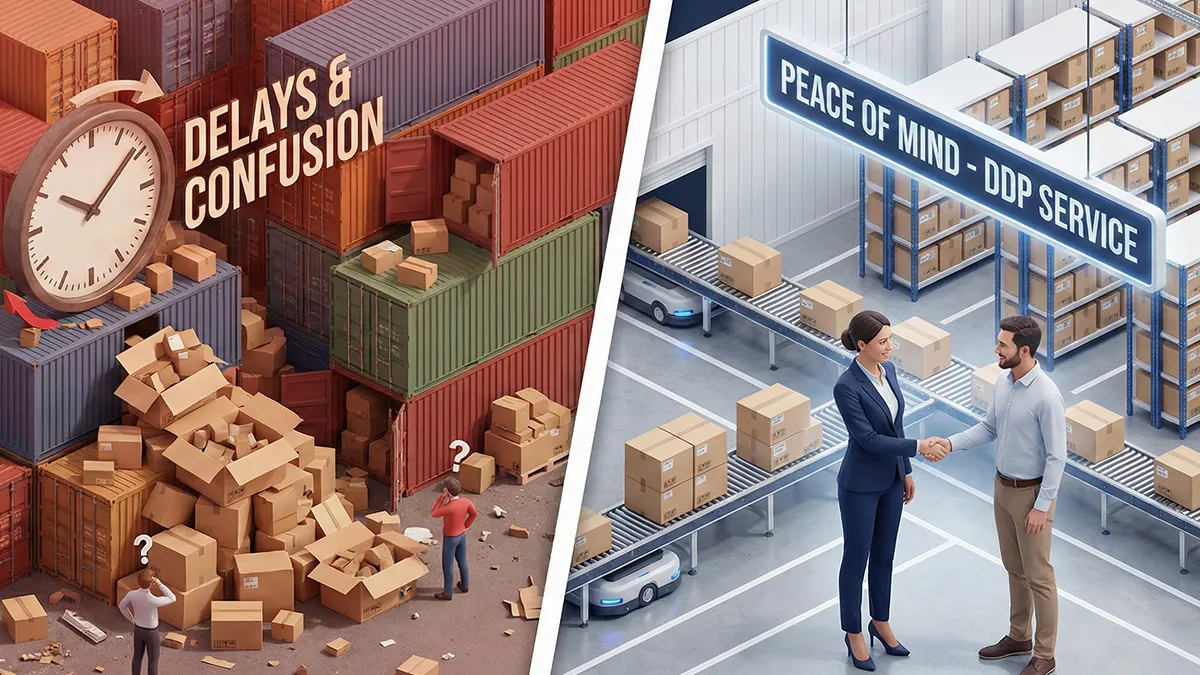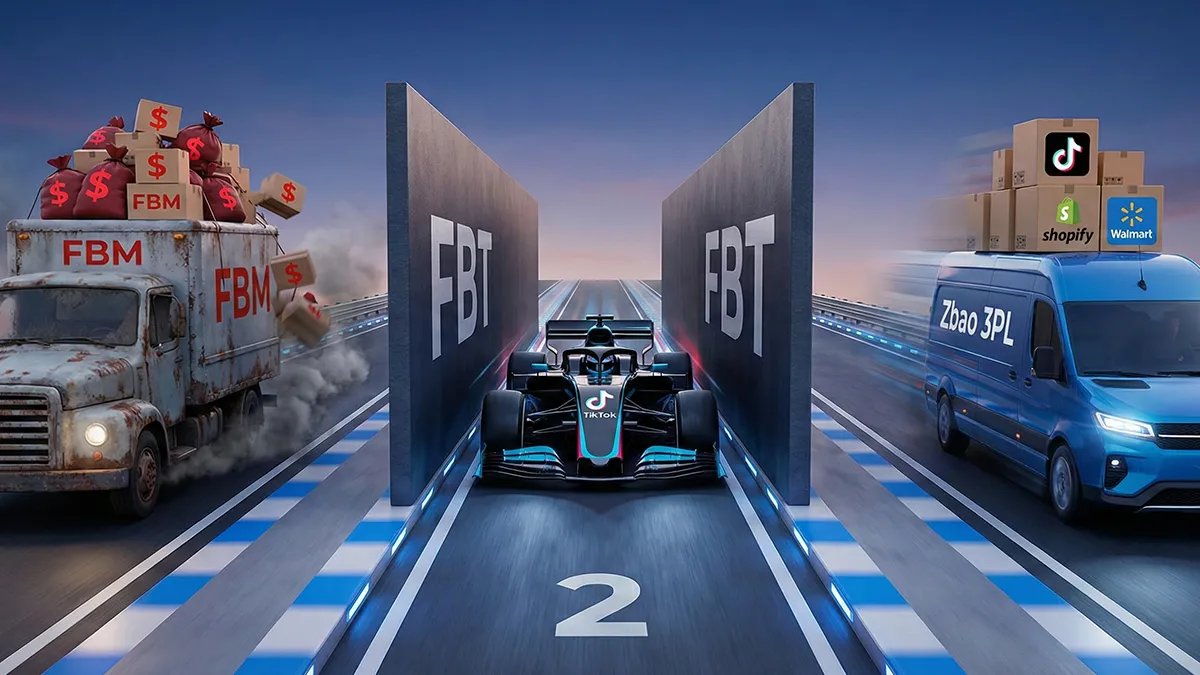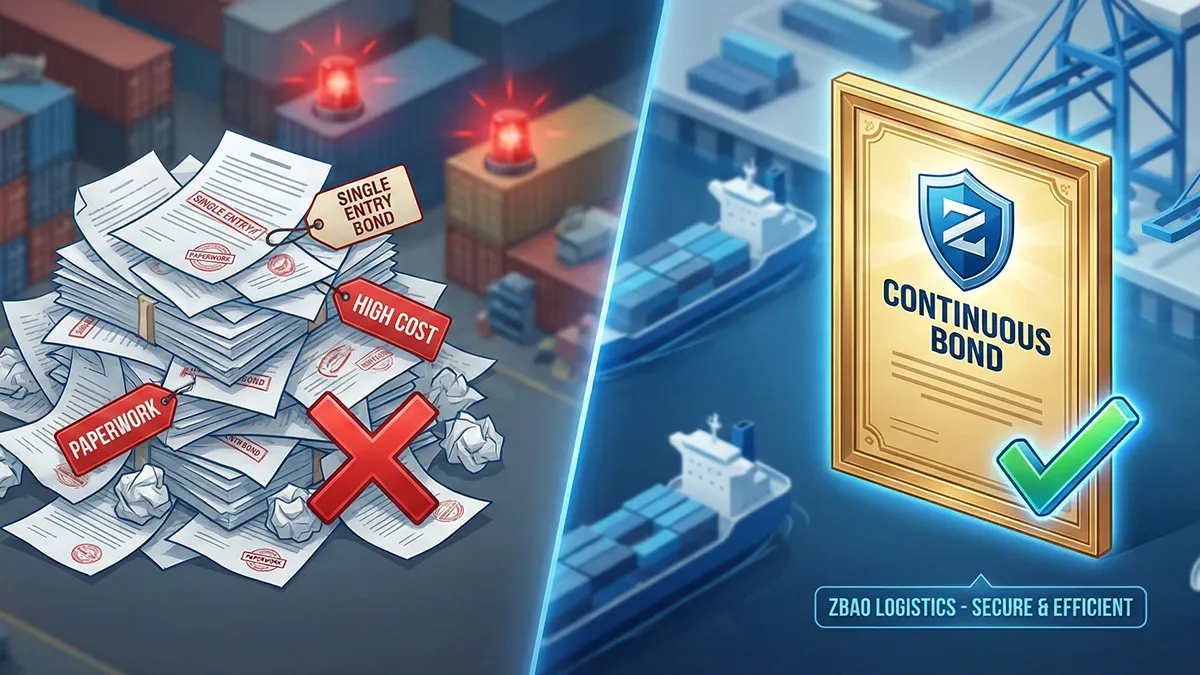What Is a Chassis Split? Meaning, Fees, and How to Avoid Extra Charges
What Is a Chassis Split?
A chassis split refers to a situation in container shipping where the trucker must pick up the container and the chassis from two different locations — for example, when the container is at one terminal but the available chassis is stored at another depot.
This typically happens because of equipment shortages, port congestion, or mismatched chassis pools, and it often results in an additional charge known as a chassis split fee.
Understanding the Role of the Chassis in Shipping

A chassis is the wheeled trailer frame that carries a container from port to warehouse or Amazon FBA facility.
Without an available chassis, the container cannot move.
In the U.S., chassis are often managed by different pools such as TRAC Intermodal, DCLI, and Flexi-Van — which means containers and chassis may not always be in the same location.
When that happens, the trucker must make two separate trips, one to pick up the chassis and one to collect the container.
This extra movement is what creates a “chassis split.”
Why Does a Chassis Split Happen?
Chassis splits occur for a variety of operational and logistical reasons.
Here are the most common causes:
-
Limited chassis availability – During peak season or port congestion, there may not be enough chassis available at the same terminal as the container.
-
Multiple chassis pool systems – Large ports like Los Angeles/Long Beach and New York/New Jersey have multiple chassis providers; if your container’s pool differs from the terminal’s pool, a split is required.
-
Operational strategy by carriers – Shipping lines may separate containers and chassis to optimize equipment usage.
-
Port and yard congestion – High traffic or yard closures can force truckers to pull chassis from off-dock depots.
According to the Intermodal Association of North America (IANA), chassis shortages and pool incompatibility have become one of the top reasons for drayage inefficiency in U.S. container transport.
What Is a Chassis Split Fee?
A chassis split fee is the extra cost charged when a trucker must travel to two different locations — one for the chassis, one for the container.
It compensates for the additional miles, time, and fuel required.
Typical rates range from USD 25 to USD 75 per container, depending on the port and distance between depots.
| U.S. Port | Typical Fee (USD) | Reason |
|---|---|---|
| Los Angeles / Long Beach | 40 – 75 | Terminal congestion, multiple chassis pools |
| New York / New Jersey | 25 – 60 | Off-dock depots and restricted pools |
| Savannah / Houston | 25 – 45 | Distance between yard and depot |
Who Pays the Chassis Split Fee?
Responsibility depends on shipment terms and drayage arrangements:
-
If the importer or consignee hires their own trucker, they typically pay the fee directly.
-
If the freight forwarder coordinates delivery, the fee may appear as a pass-through charge on your invoice.
-
In FBA deliveries, the seller often bears the cost, especially when delivery terms are DDP or DDU.
At Zbao Logistics, our trucking partners coordinate chassis availability in advance, minimizing or completely avoiding split fees.
How to Avoid Chassis Split Costs
While chassis splits can’t always be eliminated, careful planning can reduce them significantly.
1. Coordinate early with your freight forwarder.
Provide terminal details and booking info at least 48 hours before vessel arrival.
2. Use a forwarder that manages both drayage and chassis.
Forwarders like Zbao Logistics integrate trucking, chassis, and customs clearance, ensuring all assets come from the same pool.
3. Choose carriers aligned with the same chassis pool.
When possible, select shipping lines that share chassis systems with your destination terminal.
4. Schedule off-peak pickups.
Picking up during low-traffic windows can help secure chassis availability at the same location.
5. Use pre-pull services.
Pulling the container in advance allows flexibility in chassis scheduling and reduces rush-hour fees.
Real Example: Saving on Chassis Split Fees in New Jersey
A European importer shipping FBA goods through the Port of New York/New Jersey faced a USD 150 split fee per container because the chassis depot was five miles away from the terminal.
Zbao Logistics contacted the drayage carrier network, located a compatible chassis within the same pool, and rescheduled pickup.
The containers were loaded on time, and the total savings reached USD 600 across four containers.
This case illustrates how real-time coordination and local network expertise can prevent unnecessary costs.
Chassis Split vs. Chassis Flip — What’s the Difference?
Many shippers confuse a chassis split with a chassis flip, but they are different.
-
Chassis Split: Chassis and container are in different locations; the trucker must travel between sites.
-
Chassis Flip: The container is already on a chassis but needs to be transferred to another one (for example, a damaged or pool-specific chassis).
Both can incur fees, but flips are usually done at the terminal, while splits involve extra travel.
Key Takeaways
-
Chassis split = container and chassis in different places.
-
Common in U.S. ports with multiple chassis pools.
-
Typical fee = USD 25 – 75 per container.
-
Good coordination and using a single logistics provider can prevent most split charges.
Zbao Logistics: Your Partner in Drayage and Chassis Management
With years of experience in FCL, LCL, and Amazon FBA shipping, Zbao Logistics simplifies every step — from port drayage to final delivery.
Our integrated network ensures the container, chassis, and driver are in sync, saving you time and money.
We coordinate with U.S. trucking partners and terminal operators daily to prevent costly split moves and demurrage delays.
👉 Get a Free Quote or Talk to Our Experts to optimize your next container move from China to the U.S.
FAQ: Chassis Split Meaning and Fees
1. What does “chassis split” mean in logistics?
It means the trucker must collect the container and chassis from different locations, often due to equipment shortages.
2. What causes chassis split fees?
They arise when terminals and chassis depots are not co-located, requiring extra travel for pickup.
3. How much is a chassis split fee in the U.S.?
Usually between USD 25 and 75 per container, depending on port and distance.
4. Who pays for chassis split charges?
Normally the importer or shipper, unless otherwise arranged by the freight forwarder.
5. How can I avoid paying chassis split fees?
Work with logistics providers like Zbao Logistics who coordinate drayage and chassis resources in one network.


